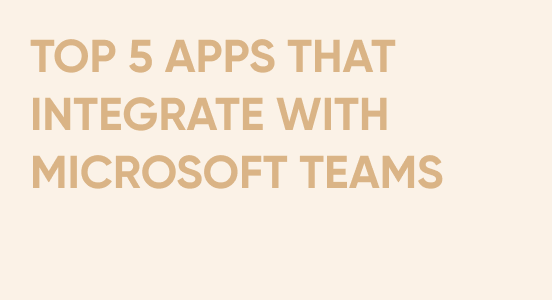
6 ways to solve your company’s out-of-control expenses problem
- Uncategorized
- 7 min read
The more money the company raises, the more it spends. The more it spends, the more it makes. But it only works if you have equipped your business with proper budget planning and control system on all levels.
With a workforce of more or less 500 employees, expenditures are inevitable: departments often buy things the company already has, process random expenses submitted for reimbursement as “business expenses,” and questionable budget distribution may also be an issue, to say the least.
Even a 50-person company is not insured against overspending, and the reason may be simple — miscommunication and poor expense approval workflow.
That said, handing over cold hard cash makes you think twice. This indeed comes as a good way to control your personal finances and avoid overspending — it simply helps you track your purchases when paying with banknotes.
But how to go about the out-of-control expenses when you are running a business? Especially given that we are living in the digital era, with direct debits and credit transfers being the most common way of paying bills.
To make sure you never pay twice for what your company already has and your employees do not exceed the budget, take a look at the following tips.
Create a budget plan and set goals
First things first — developing a budget plan is key for managing your money and protecting the financial health of your organization. A well-developed budget will help you project what money you expect to earn, plan where to spend the revenue, and clearly see the difference between the plan and reality.
So set your company’s spending limits, define goals, and adjust the budget. Sounds easy, right? But when push comes to shove, pulling it all together may give you a hard time. When working on a budget plan, a lot of things should be considered, including fixed costs like utilities, accounting and legal services, bank fees, invoice management, equipment leasing, variable and one-off costs, and cash flow, among others.
Even if you are confident your financial team will do it well, tracking everything down may become a headache. To avoid costly errors and consequences and help finance teams streamline their financial processes, you can implement financial planning software or use a budget calculator.
Use analytics to manage budget
With the rise of big data, our perception of financial analytics has changed dramatically influencing every aspect of a CFO’s operations. If you aim to build a working financial strategy, you need to process great amounts of data, and using AI-based analytical software becomes imperative.
The data-driven analytical approach can make a budgeting process more straightforward through the consolidation of financial information coming from multiple sources. This may not only improve the financial staff efficiency in a fast-paced environment but also significantly reduce the risk of human error.
With a sufficient level of integration, CFOs can use data streams coming through to identify patterns and use models with an amount of added variables far beyond what a human brain can process. This allows them to forecast the outcome of a selected financial strategy and cut losses, minimize risks and, at the end of the day, make more money.
The technical solutions capable of delivering that level of precision are available to companies of any size and for an affordable price. Regardless of the industry, data analytics should be tightly integrated into the budget formulation process.
Offer non-monetary incentives to staff
When it comes to motivating your staff, money isn’t everything. Of course, we all have our bills to pay but in case you want to boost your employees’ motivation, without bloating your budgets, there is a sure way to do it. It is called a non-monetary incentives plan.
Any motivational initiative that does not imply giving out more cash on top of regular paychecks can be called “non-monetary.” However, it does not have to be less effective from that. Quite the contrary, non-monetary benefits plans for employees often cover something money can’t buy, which is loyalty.
Before following the steps of Uber and blindly implementing a tired points, badges, and leaderboards (PBL) gamification scheme, think of what every employer wants from their staff except for doing their jobs? All answers will most likely be the same: they want people to be motivated, engaged, and feel themselves appreciated.
There are plenty of ways to spark intrinsic motivation in your employees: from public recognition of their efforts in front of the whole team or giving time to work on their own projects, to presenting memorable experiences or offering free educational programs.
Use the help of a cost reduction consultant
Although your company might have its own skillful financial specialists, auditors, and accountants, outside help won’t get in the way, on certain occasions. Expense reduction experts can take a cold, hard look at how your team controls long-term costs and provide you with an expense reduction strategy.
They will focus on defining business costs that can be reduced or even eliminated, without harm to the efficiency in regard to business operations, profitability, and other important moments. As a rule, a cost reduction professional would perform a financial risk analysis, saving-lever identification, develop lean enterprise methods, asset relocation and refinancing strategies, and a contingency plan.
But with all the advantages, the irony is independent expense reduction experts come at a high price. Among other concerns may be such as limited company knowledge, communication and quality issues, and it is a short-term option meaning that training and experience leave the company together with the consultant if you have not ensured a smooth knowledge transition.
Let people work from home
This option may come as a surprise when we speak about additional control for the business’s sake. However, the reality is that remote workers not only can save you money but also increase productivity.
With all the benefits like increased employee retention, better talent and engagement, and reduced absences, your company can downsize the office space, save on equipment, and reduce environmental costs. No more need to make weekly or monthly purchases of paper, snacks, stationery goods, and other workplace products.
Not to mention that today, dedicated solutions and innovative tools designed to make remote work secure and comfortable are actively popping up on the market. With them, you can easily create a virtual office to oversee your teams and even set up a Slack approval workflow.
Use expense approval automation software
Speaking of tech solutions developed to streamline business processes and ensure your team members do not spend money without approval, it’s only fair to mention that the above ways would be difficult to implement without automation.
Missing receipts, reports coming from different departments, purchase order approval, multiple communication channels, third parties involved in operations, utility bills, travel expenses, employees seeking expense reimbursement, and an array of other things the financial or accounting department deals with on a daily basis. Those are repetitive tasks they usually perform manually, which may result in a mistake.
Deploying an approval software would enable your team to automate the routine and focus on value-added tasks eliminating the risk of human error. As a manager you can integrate one to:
- control who has access to certain files and folders
- define roles and approval authorization
- set up an approval workflow for purchase orders and bills
- set up budget control for ongoing and new projects
- have full control over payroll changes and time off requests
- develop expense policies
- track your team members’ spending habits
When choosing a method or tech solution to control and improve your company’s budget management, keep in mind that transparency is a must when it comes to financing. A well-designed expense approval app will enable you to see where the money goes, thus, ensuring better spend visibility.
Business intelligence solutions automatically collect information to help you make data-driven decisions, as new advances can surpass human performance levels. In a business environment where things may go south at any moment, automation and more accurate forecasts could prove to be a tremendous competitive advantage.
Enjoyed the reading?
Subscribe to our fresh artiles, product updates and news

